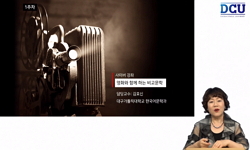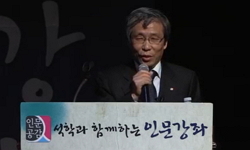This paper aims to explore how Sylvia Plath``s The Bell Jar analyzes American consumer culture of the 1950s. Plath entirely depends on the diverse descriptions of the consumption in order to portray the bell jar of confining 1950s patriarchal culture ...
http://chineseinput.net/에서 pinyin(병음)방식으로 중국어를 변환할 수 있습니다.
변환된 중국어를 복사하여 사용하시면 됩니다.
- 中文 을 입력하시려면 zhongwen을 입력하시고 space를누르시면됩니다.
- 北京 을 입력하시려면 beijing을 입력하시고 space를 누르시면 됩니다.


소비하는 욕망-실비아 플라스의『벨자』와 1950년대 미국사회 소비문화 = Consuming Desire: Sylvia Plath`s The Bell Jar and 1950s American Consumer Culture
한글로보기https://www.riss.kr/link?id=A100665472
- 저자
- 발행기관
- 학술지명
- 권호사항
-
발행연도
2015
-
작성언어
-
- 주제어
-
KDC
800
-
등재정보
KCI우수등재,SCOPUS
-
자료형태
학술저널
- 발행기관 URL
-
수록면
309-333(25쪽)
-
KCI 피인용횟수
1
- DOI식별코드
- 제공처
- 소장기관
-
0
상세조회 -
0
다운로드
부가정보
다국어 초록 (Multilingual Abstract)
This paper aims to explore how Sylvia Plath``s The Bell Jar analyzes American consumer culture of the 1950s. Plath entirely depends on the diverse descriptions of the consumption in order to portray the bell jar of confining 1950s patriarchal culture and society. Plath``s literary work prompts new ways of thinking about American mass media-magazines, newspapers, and advertisements, etc. in consumerism. She provides an extraordinary instance of the inseparability of the consumption and subjectivity in the age of Cold War. From the beginning of the novel, The Bell Jar represents Plath``s heroine, Esther Greenwood``s paralysis when faced with the constellation of the consuming desire in the consumer society. Throughout The Bell Jar, Esther shows a conflicted stance toward the consumer culture in capitalistic society; she tries to speak as a subject against the dehumanizing commodity culture, while at the same time, improving her ``feminine`` allure as a valuable object within this same culture. In other words, Esther seems to be fascinated by the commodities of the beauty and fashion industry; however, simultaneously, she protests against the feminine values promoted by consumer culture. Plath casts Esther``s rebellion against 1950s codes of femininity in Cold War perspectives; Esther signifies to be transgressing ideals of femininity. Furthermore, Plath creates the direct, immediate language and surreal images advertised in magazines, which breaks the rigid boundary between high masculine art and low feminine popular culture.
참고문헌 (Reference)
1 Horkheimer, Max, "계몽의 변증법" 문학과 지성사 2002
2 Leonard, Gary M., "‘The Woman Is Perfected. Her Dead Body Wears the Smile of Accomplishment’: Sylvia Plath and ‘Mademoiselle’ Magazine" 19 (19): 60-82, 1992
3 Smith, Caroline J., "‘The Feeding of Young Women’: Sylvia Plath’s The Bell Jar, Mademoiselle Magazine, and the Domestic Ideal" 37 (37): 1-22, 2010
4 Walker, Nancy A., "Women’s Magazines 1940-1960: Gender Roles and the Popular Press" Bedford 1998
5 Bordo, Susan, "Unbearable Weight: Feminism, Western Culture, and the Body" U of California P 1995
6 Bryant, Marsha, "The Unraveling Archive: Essays on Sylvia Plath" U of Michigan P 211-235, 2007
7 Plath, Sylvia, "The Unabridged Journal of Sylvia Plath" Anchor 2000
8 Bonds, Diane S., "The Separative Self in Sylvia Plath’s The Bell Jar" 18 (18): 49-64, 1990
9 Peel, Robin, "The Ideological Apprenticeship of Sylvia Plath" 27 (27): 59-72, 2004
10 Rose, Jacqueline, "The Haunting of Sylvia Plath" Harvard UP 1993
1 Horkheimer, Max, "계몽의 변증법" 문학과 지성사 2002
2 Leonard, Gary M., "‘The Woman Is Perfected. Her Dead Body Wears the Smile of Accomplishment’: Sylvia Plath and ‘Mademoiselle’ Magazine" 19 (19): 60-82, 1992
3 Smith, Caroline J., "‘The Feeding of Young Women’: Sylvia Plath’s The Bell Jar, Mademoiselle Magazine, and the Domestic Ideal" 37 (37): 1-22, 2010
4 Walker, Nancy A., "Women’s Magazines 1940-1960: Gender Roles and the Popular Press" Bedford 1998
5 Bordo, Susan, "Unbearable Weight: Feminism, Western Culture, and the Body" U of California P 1995
6 Bryant, Marsha, "The Unraveling Archive: Essays on Sylvia Plath" U of Michigan P 211-235, 2007
7 Plath, Sylvia, "The Unabridged Journal of Sylvia Plath" Anchor 2000
8 Bonds, Diane S., "The Separative Self in Sylvia Plath’s The Bell Jar" 18 (18): 49-64, 1990
9 Peel, Robin, "The Ideological Apprenticeship of Sylvia Plath" 27 (27): 59-72, 2004
10 Rose, Jacqueline, "The Haunting of Sylvia Plath" Harvard UP 1993
11 Friedan, Betty, "The Feminine Mystique" Dell 1983
12 Boyer. Marilyn, "The Disabled Female Body as a Metaphor for Language in Sylvia Plath’s The Bell Jar" 33 (33): 199-223, 2004
13 Gill, Jo, "The Cambridge Introduction to Sylvia Plath" Cambridge UP 2008
14 Nelson, Deborah, "The Cambridge Companion to Sylvia Plath" Cambridge UP 21-35, 2006
15 Plath, Sylvia, "The Bell Jar" Harper & Row 1996
16 Bundtzen, Lynda K., "Sylvia Plath: Modern Critical Views" Chelsea House 121-131, 1989
17 Gilbert, Sandra M., "Sylvia Plath: Modern Critical Views" Chelsea House 49-65, 1989
18 MacPherson, Pat, "Reflecting on The Bell Jar" Routledge 1991
19 Winder, Elizabeth, "Pain, Parties, Work: Syvlia Plath in New York, Summer 1953" Harper Collins 2013
20 Pollak, Vivian R., "Moore, Plath, Hughes, and ‘The Literary Life’" 17 (17): 95-117, 2005
21 Greenberg, Arielle, "Mad Girl’s Love Songs: Two Women Poets: A Professor and Graduate Student—Discuss Sylvia Plath, Angst, and the Poetics of Female Adolescence" 36 (36): 179-207, 2009
22 Plath, Sylvia, "Letters Home by Sylvia Plath, Correspondence 1950-1963" Harper & Row 1975
23 Scanlon, Jennifer, "Inarticulate Longings: The Ladies’ Home Journal, Gender and the Promises of Consumer Culture" Routledge 1995
24 Middlebrook, Diane, "Her Husband: Hughes and Plath—A Marriage" Viking Penguin 2003
25 Dowbnia, Renée, "Consuming Appetities: Food, Sex, and Freedom in Sylvia Plath’s The Bell Jar" 43 (43): 567-588, 2014
26 Meyer, Lucas, "Bitter Fame: A Life of Sylvia Plath" Viking 307-321, 1989
27 Perloff, Marjorie, "A Ritual for Being Born Twice’: Sylvia Plath’s The Bell Jar" 13 (13): 507-522, 1972
동일학술지(권/호) 다른 논문
-
Traveling Theory or Kiao-Iing? Said, Lukacs, and the Transcultural Transmission of Thought-tools
- 한국영어영문학회
- ( Jun Ye )
- 2015
- KCI우수등재,SCOPUS
-
Strange Rhetoric, Enigmatical Grammar, Poetic Logic: Wallace Stevens`s The Auroras of Autumn
- 한국영어영문학회
- ( Kelly S. Walsh )
- 2015
- KCI우수등재,SCOPUS
-
Spiritual Homosociality in 1 Tamburlaine: Free Thinkers` Challenge for the World
- 한국영어영문학회
- ( Hyun Dong Ko )
- 2015
- KCI우수등재,SCOPUS
-
Hawthorne, William James, and the Psychology of Wakefield
- 한국영어영문학회
- ( Joon Hyung Park )
- 2015
- KCI우수등재,SCOPUS
분석정보
인용정보 인용지수 설명보기
학술지 이력
| 연월일 | 이력구분 | 이력상세 | 등재구분 |
|---|---|---|---|
| 2022 | 평가예정 | 계속평가 신청대상 (등재유지) | |
| 2017-01-01 | 평가 | 우수등재학술지 선정 (계속평가) | |
| 2014-10-08 | 학회명변경 | 영문명 : 미등록 -> The English Language and Literature Association of Korea |  |
| 2013-01-01 | 평가 | 등재학술지 유지 (등재유지) |  |
| 2010-01-01 | 평가 | 등재학술지 유지 (등재유지) |  |
| 2008-01-01 | 평가 | 등재학술지 유지 (등재유지) |  |
| 2006-01-01 | 평가 | 등재학술지 유지 (등재유지) |  |
| 2005-10-14 | 학술지등록 | 한글명 : 영어영문학외국어명 : The Journal of English Language and Literature |  |
| 2004-01-01 | 평가 | 등재학술지 유지 (등재유지) |  |
| 2001-01-01 | 평가 | 등재학술지 선정 (등재후보2차) |  |
| 1998-07-01 | 평가 | 등재후보학술지 선정 (신규평가) |  |
학술지 인용정보
| 기준연도 | WOS-KCI 통합IF(2년) | KCIF(2년) | KCIF(3년) |
|---|---|---|---|
| 2016 | 0.06 | 0.06 | 0.1 |
| KCIF(4년) | KCIF(5년) | 중심성지수(3년) | 즉시성지수 |
| 0.18 | 0.2 | 0.384 | 0 |




 KCI
KCI KISS
KISS







